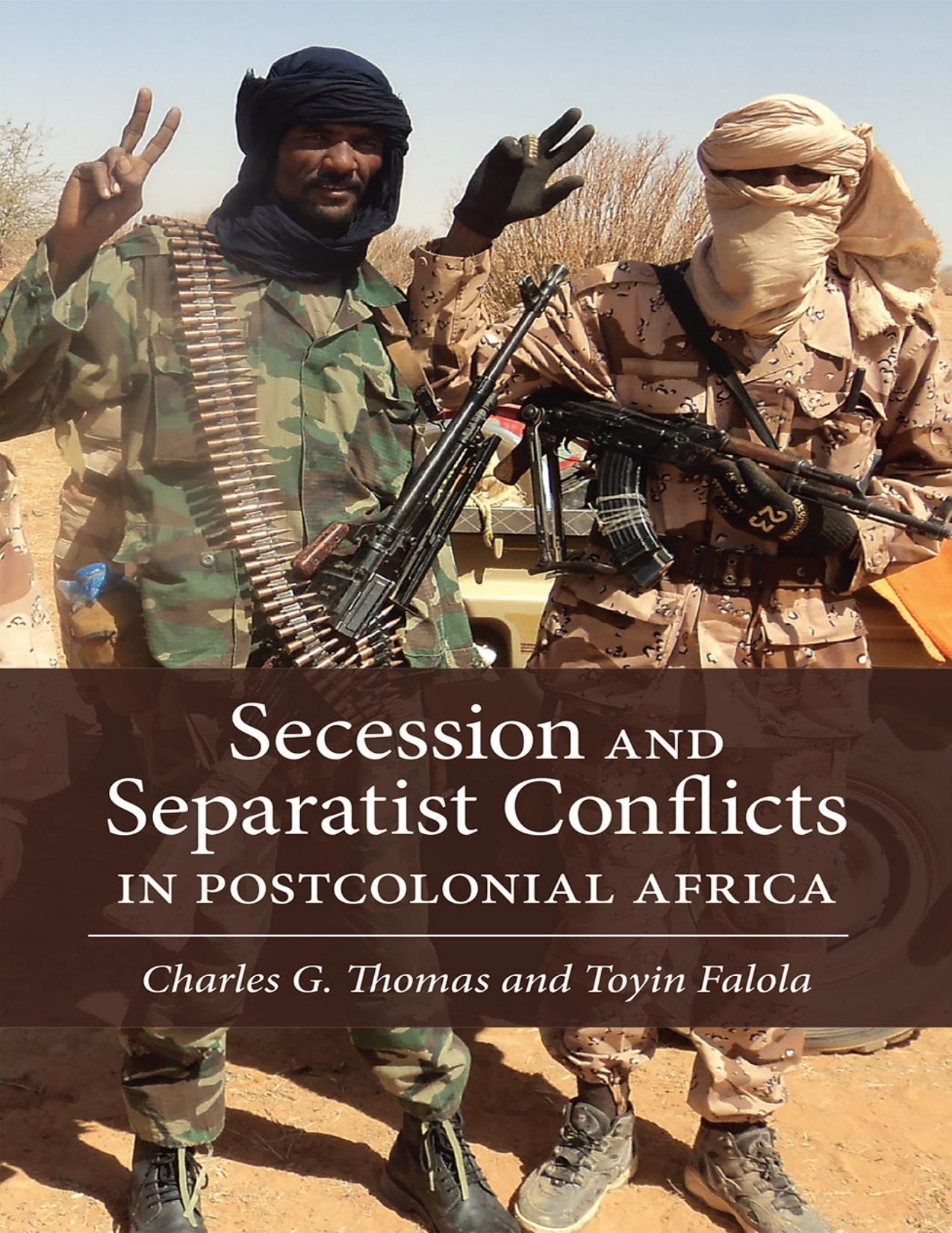Secession and Separatist Conflicts in Postcolonial Africa by Charles G. Thomas

Author:Charles G. Thomas
Language: eng
Format: epub, pdf
Tags: Africa; History;
ISBN: 9781773851297
Publisher: University of Calgary Press
Published: 2020-04-09T22:33:50+00:00
Secession, Separatism, and the Negotiation of Statehood
Of course, having narrated the history of the Sudan’s conflicts between North and South, it is now apparent that secession and separatism have had roles to play within the conflict, but rarely at the same time. While secession would eventually be completely achieved, it would be wrong to consider that this was the inevitable end goal for these decades of conflict. In the context of this work, it is perhaps most important to understand that the historical arc of the secessionist/separatist desires of the South is irrevocably bound to both the methods of struggle the actors had chosen and the continental and global context that each stage was taking place in.
Following the independence of the Sudan, there was little known about the actual motivations of the fighters who would become the Anya-nya, although eventually they would become synonymous with the goal of secession and complete independence for the South. On the other hand, the early Southern political representation made every effort to propose their own initiatives for dealing with what they saw as gross inequality in the political and economic development of the South. Even in the earliest days of independence, the Southern elected officials pressed for recognition of their desire for a federal structure that would see a degree of self-determination fall to the South itself.64 This motion followed the failure to attract UN or British support for a demanded plebiscite before independence in 1955. Unfortunately, by 1957 the National Assembly declared that a federal structure was unworkable in the Sudan. Although rebuffed, the Southern Political Bloc began reaching out to other “non-Arab” groups such as the Beja and Fur for support of a federal structure. These efforts appeared to be bearing fruit in 1958 but ended up being lost in the coup that removed Premier Khalil from office.
With the change in government and increasing government repression under General Abboud, the methods of pursuing Southern representation changed. At this point it had become apparent that a political settlement into a federation was no longer a plausible option. The advent of the 1960s then saw new attempts to bring power and representation to the South. In 1962 the more prominent members of the Southern political class had removed themselves from the Sudan to avoid the increasingly widespread arrests of political dissidents. From Kinshasa they declared the creation of an opposition movement for the South, the aforementioned SACDNU, which quickly changed its name to SANU.65 No longer relying on the North to negotiate a settlement, SANU demanded complete separation of the South into its own sovereign country.66 However, they had no armed forces of their own and decried the methods of the “rebels” in the bush.67 Instead, they placed their faith in transnational organizations such as the OAU and the UN. In the 1960s the United Nations was still dealing with the Katanga crisis and the OAU had just been formed, with territorial sovereignty as one of its core principles. The diplomatic calls for secession
Download
Secession and Separatist Conflicts in Postcolonial Africa by Charles G. Thomas.pdf
This site does not store any files on its server. We only index and link to content provided by other sites. Please contact the content providers to delete copyright contents if any and email us, we'll remove relevant links or contents immediately.
| Africa | Americas |
| Arctic & Antarctica | Asia |
| Australia & Oceania | Europe |
| Middle East | Russia |
| United States | World |
| Ancient Civilizations | Military |
| Historical Study & Educational Resources |
Goodbye Paradise(3456)
Men at Arms by Terry Pratchett(2685)
Tobruk by Peter Fitzsimons(2376)
Arabs by Eugene Rogan(2196)
Pirate Alley by Terry McKnight(2128)
Borders by unknow(2119)
Belonging by Unknown(1732)
It's Our Turn to Eat by Michela Wrong(1593)
The Biafra Story by Frederick Forsyth(1561)
Botswana--Culture Smart! by Michael Main(1485)
The Source by James A. Michener(1459)
A Winter in Arabia by Freya Stark(1447)
Gandhi by Ramachandra Guha(1435)
Coffee: From Bean to Barista by Robert W. Thurston(1420)
Livingstone by Tim Jeal(1394)
The Falls by Unknown(1372)
The Shield and The Sword by Ernle Bradford(1312)
Africa: Altered States, Ordinary Miracles by Richard Dowden(1296)
Egyptian Mythology A Fascinating Guide to Understanding the Gods, Goddesses, Monsters, and Mortals (Greek Mythology - Norse Mythology - Egyptian Mythology) by Matt Clayton(1278)
